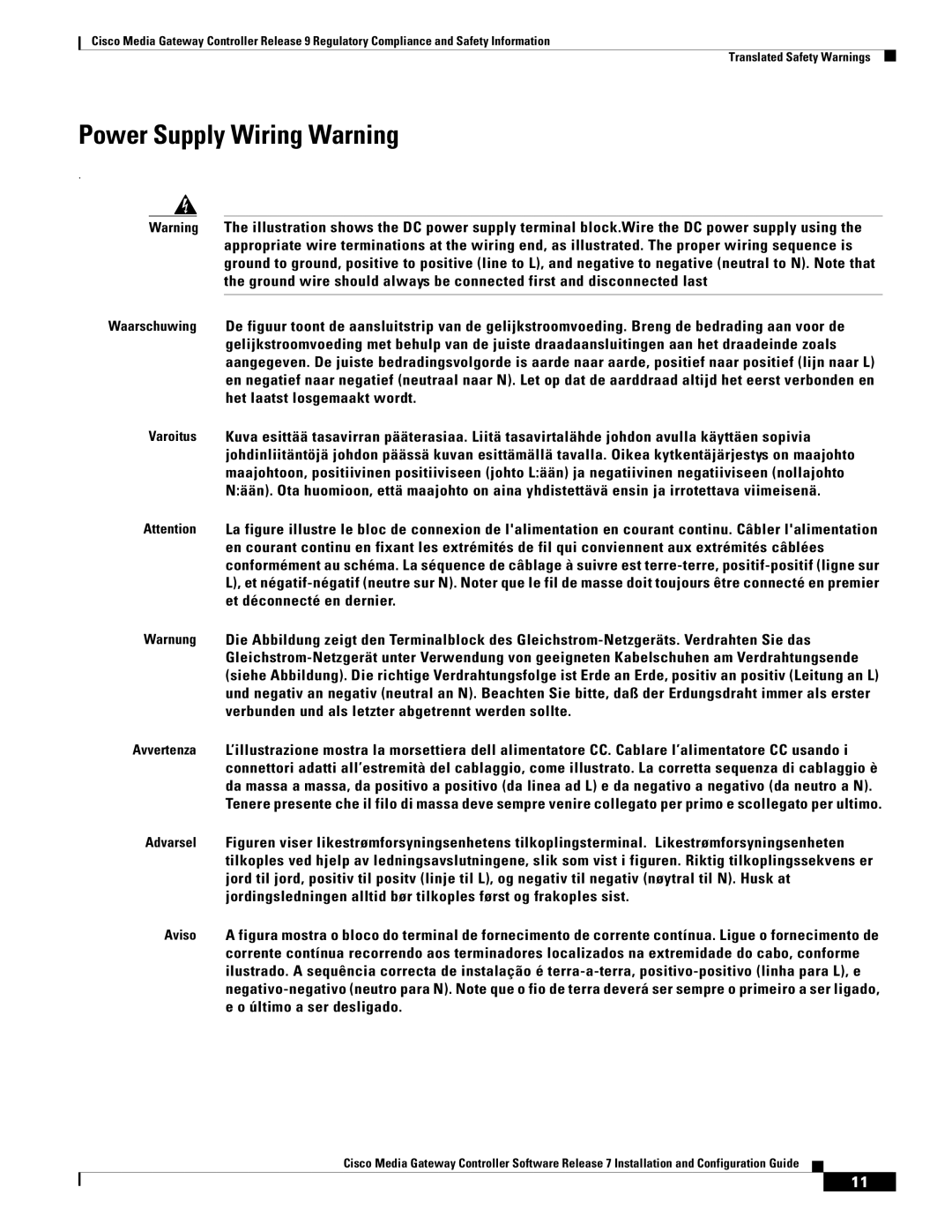Gateway Controllers specifications
Cisco Systems Gateway Controllers play a pivotal role in the modern networking landscape, particularly within service provider infrastructures. These devices serve as critical components that facilitate the efficient management of voice, video, and data traffic, enabling seamless communication across diverse networks. Combining robustness, scalability, and advanced features, Cisco's Gateway Controllers provide businesses with the tools necessary to optimize their network environments.One of the standout features of Cisco Gateway Controllers is their ability to handle various signaling protocols, including SIP (Session Initiation Protocol), H.323, and MGCP (Media Gateway Control Protocol). This flexibility ensures interoperability with a wide range of telecom systems and devices, which is crucial for organizations transitioning to IP-based communications.
Integration of voice and video services is made seamless through advanced transcoding capabilities. Cisco Gateway Controllers can convert media streams between different codecs, ensuring high-quality communication regardless of the endpoint's capabilities. This is particularly valuable for enterprises with a mix of legacy and modern communications equipment, as it protects existing investments while facilitating growth.
Traffic management is another significant characteristic of Cisco Gateway Controllers. They utilize sophisticated traffic engineering techniques to prioritize real-time communication signals and optimize bandwidth allocation. Quality of Service (QoS) mechanisms ensure that voice and video traffic is given priority over data traffic, reducing latency and maintaining call quality even during peak usage.
Security features are also a hallmark of Cisco's solutions. Gateway Controllers include robust encryption, access control, and intrusion prevention systems to ensure that network communications are protected against potential threats. This is increasingly important as organizations face a growing number of cybersecurity challenges.
Additionally, Cisco's extensive software ecosystem, including platforms like Cisco Unified Communications Manager, allows for an integrated approach to communication solutions. This interconnectivity not only simplifies management but also enhances the capabilities of Cisco's Gateway Controllers by enabling advanced features like unified messaging and presence information.
Overall, Cisco Systems Gateway Controllers combine advanced technologies, essential features, and security measures to support modern networking needs. Their ability to handle diverse communication protocols, coupled with traffic management and high-level integration, positions them as a crucial solution for organizations seeking to leverage the full potential of converged communication systems. By incorporating these services, businesses can enhance operational efficiency and improve overall user experience, paving the way for future technological advancements in communication.

